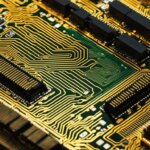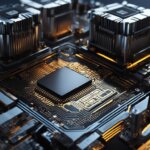Table of Contents
Random access memory (RAM) is a crucial component of computing device performance. If you’re wondering what RAM is, how it works and why it’s important, you have come to the right place.
In simple terms, RAM is a type of computer memory that allows for the quick and temporary storage of data used by the processor. It facilitates easy accessibility and retrieval of data from storage devices, which ultimately enhances device performance.
Random access memory plays a fundamental role in computing, and it is essential to understand its concept and significance in the functioning of computing devices.
Key Takeaways
- Random access memory or RAM is a type of computer memory that allows for fast and quick access to data used by the computer processor.
- Ram acts as a bridge between the computer’s processor and its storage devices, enhancing device performance.
- Data stored in RAM is temporary and disappears when power is turned off.
- The efficient access and retrieval of data from RAM enable computing devices to execute tasks quickly and smoothly, contributing to a seamless user experience.
- Understanding the concept and significance of random access memory is fundamental to anyone interested in computing and technology.
What is Random Access Memory?
Random access memory, commonly known as RAM, is a type of computer memory that allows for fast and temporary storage of data. Unlike other forms of memory, RAM provides swift access to data, allowing the computer’s processor to retrieve and manipulate information rapidly. Essentially, RAM acts as a bridge between the computer’s processor and storage devices, facilitating the efficient execution of tasks and enhancing overall device performance.
“RAM is a crucial element in computing, playing a vital role in enhancing device performance.”
RAM is one of the main types of memory used in computing devices, including desktops, laptops, tablets, and smartphones. Programs and applications, such as web browsers, word processors, and games, run in RAM when in use, allowing the processor to access crucial data quickly. Data stored in RAM remains accessible as long as the device is powered on, but it is temporary and gets wiped clean when the device is turned off.
How is Random Access Memory different from other types of memory?
Other types of memory, such as read-only memory (ROM) and hard disk drives (HDD), provide permanent rather than temporary storage of data. ROM stores data that is typically pre-programmed and cannot be changed, while HDDs offer large capacity storage of data files and documents. Compared to RAM, these other types of memory are relatively slow and not suitable for immediate data retrieval.
How Does Random Access Memory Work?
Random access memory, often referred to as RAM, is an integral part of computing that enhances device performance and ensures swift data retrieval. When a computer program is executed, relevant data and instructions are transferred from storage devices such as hard drives or solid-state drives, to be temporarily stored in RAM for quick access.
Data stored in RAM is accessible by the device’s central processing unit (CPU), without having to spend time retrieving information from slower storage devices. The CPU can manipulate the data stored in RAM rapidly, allowing for efficient execution of tasks and a smooth user experience.
RAM functions by storing data in electronic circuits that are arranged in rows and columns. These circuits can be rapidly accessed through a memory controller to retrieve the stored data. When the power to the computer is turned off, the data stored in RAM is lost. Therefore, the information stored in RAM is temporary and volatile, and requires a constant power source to retain the data.
Understanding how random access memory works is crucial for anyone interested in computing and technology. RAM plays a vital role in storing and retrieving data for efficient device performance, making it an essential component in modern computing devices.
Conclusion
Random access memory, abbreviated as RAM, is a crucial component that enhances device performance in computing. Its fast and temporary storage capabilities provide efficient access and retrieval of data, resulting in smooth execution of tasks and a seamless user experience.
It is essential to understand the concept and significance of random access memory for anyone interested in computing and technology. RAM acts as a bridge between the processor and the storage devices, enabling the efficient execution of tasks and enhancing device performance.
In conclusion, random access memory plays a vital role in computing, and its importance cannot be overstated. It is crucial to ensure that your device has an adequate amount of RAM to facilitate the efficient execution of tasks and enhance device performance.
FAQ
What is random access memory (RAM)?
Random access memory, commonly referred to as RAM, is a type of computer memory that allows for the quick and temporary storage of data. It provides fast access to data, enabling the computer’s processor to retrieve and manipulate information rapidly.
How does random access memory work?
Random access memory works by storing data in electronic circuits that can be accessed randomly and rapidly. When a computer program is executed, relevant data and instructions are loaded into RAM from storage devices, allowing the processor to access and manipulate the data quickly.
What happens to data stored in RAM when the power is turned off?
Data stored in RAM is temporary and vanishes when the power is turned off. It remains accessible as long as the computer is powered on but is not permanently stored like data on other storage devices.
Why is random access memory important?
Random access memory is crucial for enhancing device performance. Its efficient access and retrieval of information enable computers to execute tasks quickly, contributing to a seamless user experience.
What role does random access memory play in computing?
Random access memory acts as a bridge between a computer’s processor and its storage devices. It facilitates the efficient execution of tasks by providing fast and temporary storage for data, improving device performance.













